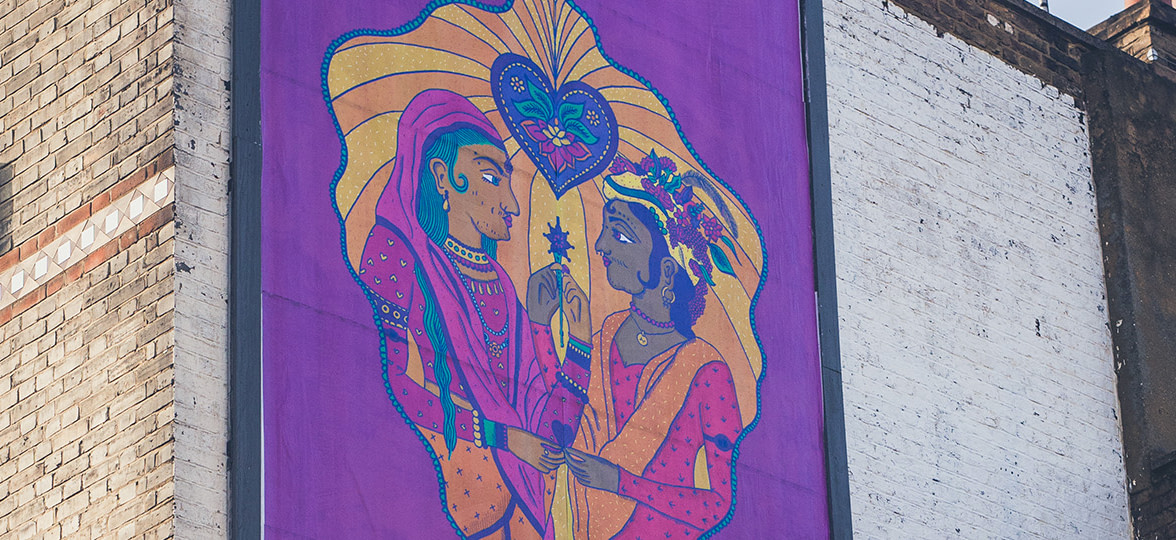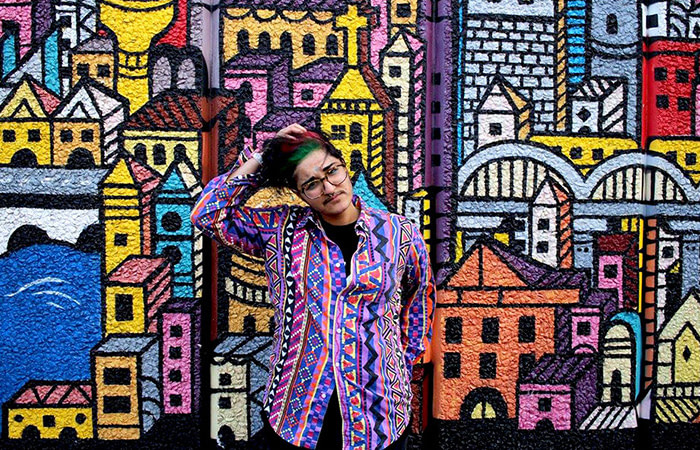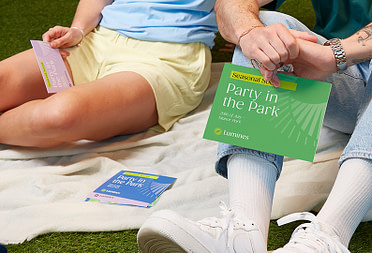Reflections of me: Soofiya on self-representation in art
Artist and educator Soofiya explores themes of gender and identity.

Soofiya is a visual artist based near London, whose bright illustrations, bold installations and educational workshops are designed to trigger conversations on themes of gender, identity and race.
MOO caught up with the artist, educator and Friday Night Sketch host to discuss their colourful explorations of identity and tips for graduate designers.

A graphic design graduate from Ravensbourne University in North Greenwich, Soofiya teaches for a foundation course on art and design, and creates work for artistic spaces including the Tate galleries, the V&A museum and the Barbican arts centre.
After hosting Friday Night Sketch at the Design Museum on the subject of Mapping Memories, MOO caught up with Soofiya to talk about visibility, self-acceptance, and the benefits of creating a ‘bedroom empire.’
Tell us a bit about your background and how you got into design.
I live with my parents, who are from Pakistan, in my childhood home. I had a tough time at college and school, but graphic design changed my life in every way. I’d come home, put my headphones on, and draw. The world didn’t exist: it was just me, creating. I could make mountains and move them – I could do anything.
I felt so disempowered in my life, that being empowered by art was a turning point for me, and that’s what I try to do with my teaching. If I can give even a fraction of that feeling to someone else, my job’s done.
How has your sense of identity informed your work?
Growing up, I didn’t see anyone like me out there in the world – someone brown and hairy and very visibly non-conforming – and that can be a very hard space to occupy. If you don’t see yourself in the world, how do you know you exist? How do you know you belong?
If there’s something I don’t understand, or I’m sad about, I’ll build a project around it to help me explore it. In the last couple of years, I’ve been using my work to look at ideas around identity, race, gender and immigration.
I was also never taught by anyone like me, which is one of the reasons I teach. By being and teaching, you can be the person you needed, but to everyone else. You can be the person you wanted to see.
The character ‘Soof the Floof’ appears regularly in your work. Can you explain the inspiration behind it?
Soof the Floof is basically a genderless, gelatinous blob. I was doing a summer school at the Tate, and we were given a piece of clay to make something – anything. I was wondering how I could depict myself, and the parts I don’t feel comfortable with: my weight, my hairiness, the way that I am. So I made an object that represented all that – but although it embodied parts of myself I don’t like, it was still lovable. How can you hate Soof the Floof?
One thing I’ve really evolved in my work is design’s therapeutic value, and Soof the Floof has become a way of talking about difficult subjects, like gender and race, in a way that’s playful and accessible. In workshops, I’ll ask people to make their own Floofs – it’s a lovely vehicle for engaging discussion.
Which project have you been most proud of so far?
I did an exhibition last year called Soof in Private. I shared my Google search history on one wall, my private messages on another, and both my public and private Instagram accounts. There was a dialogue between the two that never exists on your phone, and when they’re on the wall side-by-side, you can see that identity can be very compartmentalised.
Identity plays an important role in art because you can be a mirror to the world. It allows others who have overlaps with you – similar feelings about gender, or someone who’s come from a similar background – to see themselves reflected back. I think it’s good to feel seen and to witness others, too.
What’s your workspace like?
My bedroom is my studio – freelancing can be scary and precarious, but it can also be exciting and empowering, and I love the idea of having a bedroom empire.
It’s a reassuring tether, which has also opened up a lot of opportunities I wouldn’t have had otherwise. I feel quite mobile being able to go into London or travel to Leicester for work, and having that base to come back to. We’re lucky to live in a digital era of mobility, and I’ve found that leaning into it helps. Often, designers assume you need a studio space to have a design career, but you can do things your own way.
My favourite thing right now is having meetings in my pyjamas. I feel like I’ve made it in life when I can take a phone call with a bowl of cereal in my hand.
What’s your biggest tip for new designers?
Do what you love, but also make sure you pay the bills. It’s a hard hustle, but you need to hang onto why you’re doing this. For so long, I was doing corporate typography and branding – no illustration at all. I was excited because I was doing graphic design, and that’s what I love, but my aim was to be excited by what I’d made.
It’s not going to be there for every project, but that’s OK. And it’s not all going to be fun – 90% is emails, meetings and invoicing – but that 10%? Well, it makes everything worth it. Your brain is going at 100 miles an hour, and the adrenaline is pumping… It’s brilliant. So find that thing that gets you going, whatever that may be, and run after it as much as you can.
Finally, listen to your gut, because it knows where to go better than anything else. Go with the flow, but be strategic. Plan a few months – not years – ahead, then regularly review and reflect to work out where you are.
You hosted Friday Night Sketch on the subject of Mapping Memories. What does that process mean to you?
When I think of my life, I imagine pins on a corkboard, connecting everything together on this big map, from work to my social life. I need everything to be physical and visual for me to make sense of things, and I think a memory map is perfect for that.
It’s like putting everything that’s heavy in your brain onto one page – then you can neaten it up and find your routes. As soon as you have a map, the whole world can be home.
Discover more amazing artists and creatives like Soofiya in our Interviews section.
Originally published on Apr 25, 2019
Keep in touch
Get design inspiration, business tips and special offers straight to your inbox with our MOOsletter, out every two weeks.









